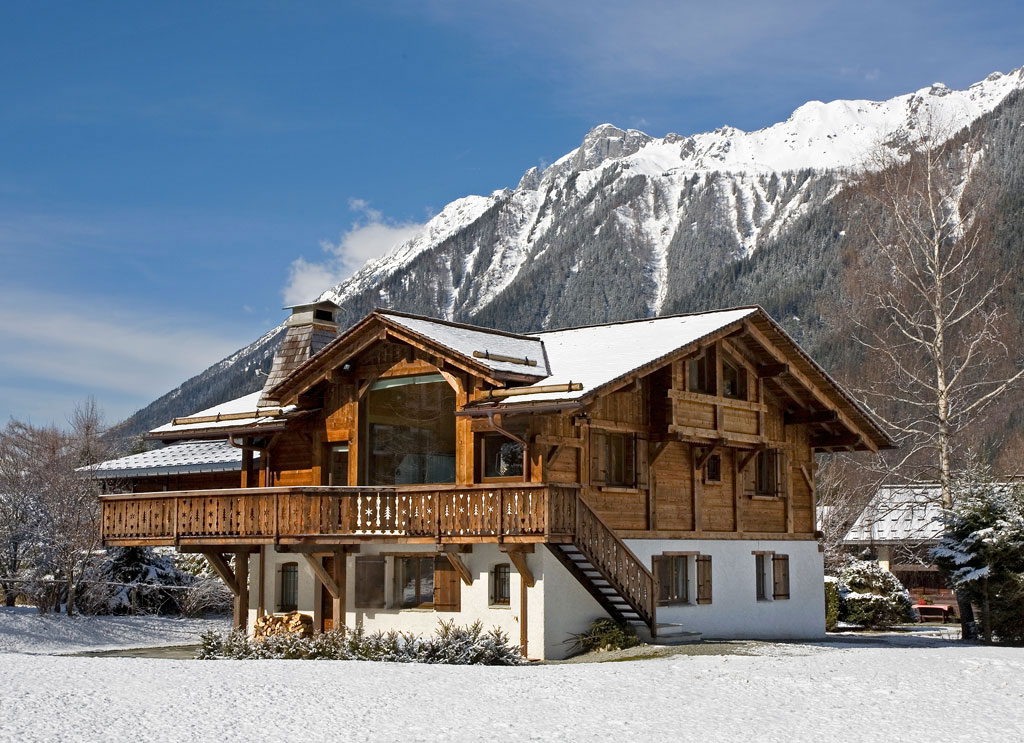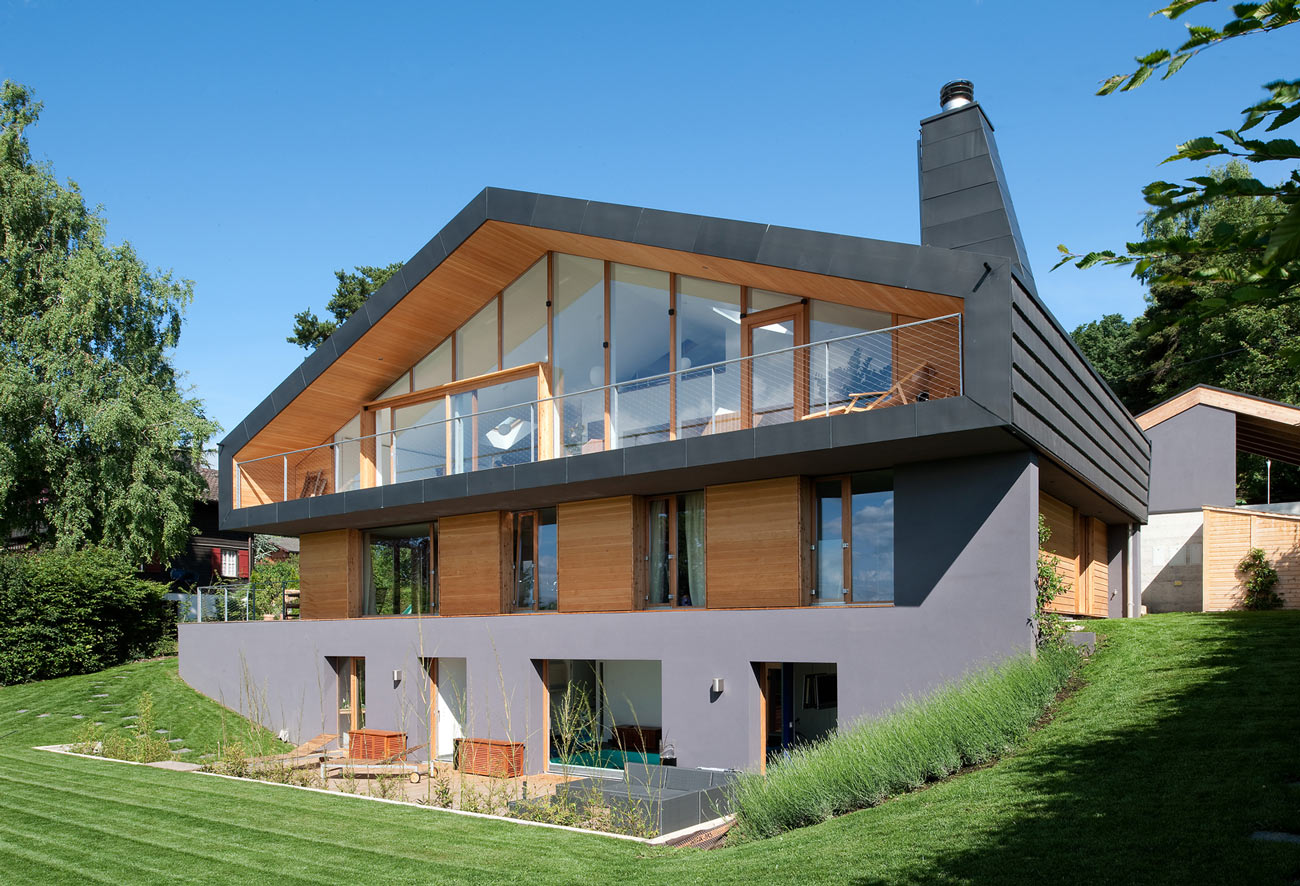Chalet house - simplicity or nobility?
A good example of the evolution of "from dirt to riches" can be considered a style of chalet. Modern cottages in the chalet style are chosen to demonstrate their own importance and devotion to centuries-old traditions. However, originally this word was used for the tiny houses of shepherds, which appeared on the slopes of the mountains in Savoie, a province on the border of France with Italy and Switzerland, serving as temporary shelter from the weather. Once blatantly rural and rustic chalet gained popularity and took its rightful place alongside the most refined architectural styles.
Advantages of the thoroughness of wood and stone, which are the main building materials, a couple of centuries after the birth of the style brought the house-chalets in the leaders of European building fashion. Our fellow citizens know not so much about this minimalistic "alpine", and often "chalet" is called even painted with stain board summer houses. But this is a proud name, and it can be a solid house with a rich texture.
When asking us to develop the design of the facade of your home, people often list the style of chalet. So what is this style, and why is it so beloved?
The hallmarks of the chalet style
If you see it:
- A façade facing east;
- High stone basement;
- The floor above the plinth of a wooden beam, decorated with wooden beams, pilasters, sometimes - whitewashed with painting;
- a sloping, gable roof, which protrudes far beyond the walls (up to 2 meters) and is the dominant element of the building;
- a large open terrace along the walls (sometimes along the entire perimeter of the house) at the second floor level, or paved with stone at the basement level;
- a balcony under the roof slopes
Know that you are looking at a chalet house.

The structural features are dictated by the harsh natural conditions in which the style originated:
- The stone base is stable even on difficult terrain.
- A wide flat roof reliably shelters the walls from the destructive effects of the rains; having accumulated a thick layer of snow in winter, it warms in cold winters. Such a roof will not become an obstacle to the wind, it will not destroy it.
- Thanks to the long terraces, extending beyond the perimeter of the building, it increases the usable area.
In the appearance of the chalet there is no aspiration to the height and fragility, as, for example, in the Gothic. On the contrary, it shows the exceptional thoroughness and monumentality. Alpine houses as if embodied the wisdom and eternity of the mountains. A minimum of extravagance, ornamentation, only the essentials.
Over time and under the influence of precipitation and winds, the appearance of the chalets did not suffer at all. On the contrary, the harsh charm of scratched stone, a noble dark shade appeared on the softwood used for the facade. The owner of the house paid more attention to the eastern facade, which was later covered with white lime and paintings and decorated with simple carvings. The opposite façade was additionally covered with shingles or wood chips to protect it from the weather.
Naturality is the basis of everything
Chalet style does not accept artificiality, although modernity has made its own adjustments to the traditional technology. Wood today is replaced by polyurethane imitation, making construction cheaper and easier. In defense of polyurethane beams should be said that they are varied in color and texture, similar in appearance to the natural wood and significantly prolong the life of the house.
Stone remains an indispensable foundation of the structure. It is to it the houses in chalet style owe their strength and durability. The basement, where, as a rule, the fireplace room and boiler room are located, is made of stone. At the same time, such a basement protects against moisture ingress, high snow drifts and freezing of the soil. The upper living area of light wood does not overload the structure, allows the owner to enjoy clean air with a natural microclimate.
TRADITIONS COMBINED WITH MODERNITY
Centuries of history have made adjustments to the style as the social conditions of Europeans have changed. From seasonal shepherd's huts in the 16th century, chalets were transformed into family estates, with more attention paid to the comfort of living. But the materials were still stone and wood, and only the size of the house increased.
With the beginning of the 20th century many old chalets were converted into hotels in Europe. In our time, projects of new recreation centers and private buildings in the Alpine style are implemented. Attributes of the classic prototype are visible in modern buildings. The same natural materials, the same solidity, the same sense of reliability and comfort.

Do not think that tradition excludes the flight of design ideas, and all the buildings are boring and one-size-fits-all. Instead of natural stone now use bricks and ceramic blocks.

The top floor in the original is made of wood, in a modern house chalet can be built from a variety of materials:
- The closest to the original, but also the most costly option is laminated lumber. Excellent appearance, durability, no need for external finishing, elimination of deformation and cracking - these are the advantages of this material. Provided that its quality is high.
- Unplit natural moisture bar. Assumes mandatory external insulation method "ventfasad". A good option, especially given the low cost.
- Frame technology. The house is warm and economical, but requires full observance of the subtleties of technology - it is necessary to carry out the calculation of the carrying capacity to hold a large roof, the correct stacking and protection of insulation.
- Logs. The option is not quite Alpine, but rather Russian. It is Russian wooden architecture is characterized by log buildings, but in the case of the house chalet guarantees the appearance of a special charm, unique beauty.
- The roof in the classical form - shingles of larch or pine. In a modern reading - for example, shingles. The main thing - to think about the snow melting system and ensure that the construction of the roof strength.

There are no strict restrictions in the design of a chalet house, on the contrary, the architect has the opportunity to 'experiment' with a combination of even the opposite materials. It is amazing how easy it is to breathe in a house like this (with all the massiveness of its space), and how distinctly peaceful the feeling is! After all, Europeans loved the chalet for a reason.
Examples of houses in the style of chalet in our database of facades.